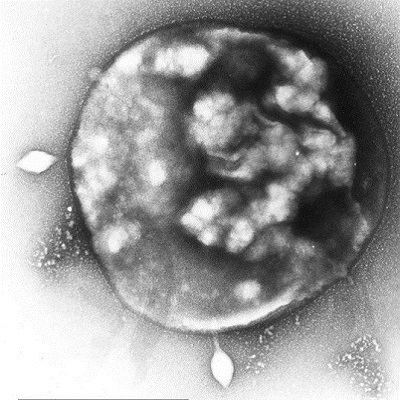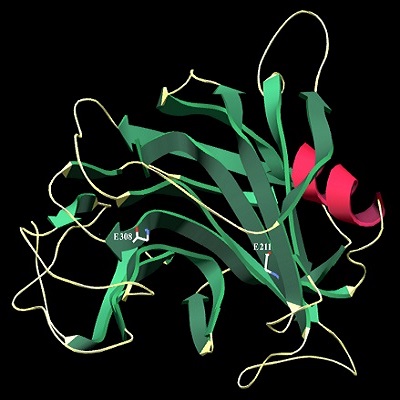

Tel :0649913617
Fax :0649913628
raffaele.cannio@cnr.it
Fax :0649913628
raffaele.cannio@cnr.it
RAFFAELE CANNIO
Researcher
Istitute of Molecular Biology and Pathology - National Research Council
Department of Chemistry
Sapienza University of Rome - Edificio di Chimica, edificio Cannizzaro (VEC) Piano terzo, stanza 320 (lab: 317) P.le A. Moro 5 - 00185 Roma
Researcher
Istitute of Molecular Biology and Pathology - National Research Council
Department of Chemistry
Sapienza University of Rome - Edificio di Chimica, edificio Cannizzaro (VEC) Piano terzo, stanza 320 (lab: 317) P.le A. Moro 5 - 00185 Roma
After a training on molecular and cell biology in cancer research at the University of Copenhagen, my scientific and research activity has been focused on molecular genetics, genomics, genetic and protein engineering of enzymes with high potential in biotechnological application. This multi-task approach allowed the identification of molecular determinants of protein stability in thermophilic enzymes as well as their suitable modification for applied biotechnology. Among others, enzymes involved in the degradation and synthesis of complex polysaccharides and proteins involved in cell defence against oxidative stress were purified and their genes cloned and overexpressed in heterologous hosts such as E. Coli and yeasts.
More recently, I have been dedicated to the set-up and the optimization of new systems for the manipulative genetics of the hypertermophilic archaeon Sulfolobus solfataricus, namely to the construction of new plasmid and viral vectors for the expression of homologous and heterologous genes S. solfataricus. These studies have shed light on the high similarity between archaeal and pathogenic human viruses in the infection and propagation modes. Moreover, as genetic tools, these extrachromosomal DNAs were demonstrated to be effective in directed evolution of mesophilic genes aimed at obtaining protein with improved resistance to common denaturing agents. |
1.Girfoglio, M., Rossi, M, Cannio R. (2012) Cellulose degradation by Sulfolobus solfataricus requires a cell-anchored endo-ß-1-4-glucanase. J Bacteriol. 194:5091-100.
2.Morana, A., Paris, O., Maurelli, L., Rossi, M. and Cannio R. (2007) Gene cloning and expression in Escherichia coli of a bi-functional beta-D-xylosidase/alpha-L-arabinosidase from Sulfolobus solfataricus involved in xylan degradation. Extremophiles. 11:123-32. 3.Aucelli. T., Contursi, P., Girfoglio, M., Rossi, M. and Cannio R. (2006) A spreadable, non-integrative and high copy number shuttle vector for Sulfolobus solfataricus based on the genetic element pSSVx from Sulfolobus islandicus. Nucleic Acids Res. 34, e114. 4.D'Errico, G., Di Salle, A., La Cara, F., Rossi, M. and Cannio R. (2006) Identification and characterization of a novel bacterial sulfite oxidase with no heme binding domain from Deinococcus radiodurans. J Bacteriol. 188, 694-701. 5.Sacchetti, S., Bartolucci, S., Rossi, M. and Cannio, R. (2004) Identification of a GDP-mannose pyrophosphorylase gene from Sulfolobus solfataricus. Gene. 332, 149-57. 6.Bartolucci, S., Rossi, M. and Cannio, R. (2003) Characterization and functional complementation of a nonlethal deletion in the chromosome of a beta-glycosidase mutant of Sulfolobus solfataricus. J Bacteriol. 185, 3948-3957. 7.Morana, A., Di Prizito, N., Aurilia, V., Rossi, M. and Cannio, R. (2002) A carboxylesterase from the hyperthermophilic archaeon Sulfolobus solfataricus: cloning of the gene, characterization of the protein. Gene. 283, 107-115. 8.Kohen, A., Cannio, R., Bartolucci, S. and Klinman, J.P. (1999) Enzyme dynamics and hydrogen tunneling in a thermophilic alcohol dehydrogenase. Nature. 399, 496-499. 9.Cannio, R., Rossi, M. and Bartolucci , S. (1994) A few aminoacid substitutions are responsible for the higher thermostability of a novel NAD-dependent bacillar alcohol dehydrogenase. Eur. J. Biochem. 222, 345-352. 10.Cannio, R., Rennie, P.S. and Blasi, F. (1991) A cell specific and enhancer dependent silencer in the regulation of the expression of the human urokinase plasminogen activator gene. Nucleic Acids Res. 19, 2303-2308. |
Since my recent move frome Naples to Rome I have no group yet but collaborate with my colleagues Dr Paolo Bovicelli and Dr Giuliana Righi |
Dr Michele Girfoglio, researcher at GE Healthcare, Milan. Prof. Mosé Rossi, Associate Professor at IBP, CNR, Naples. Dr Patrizia Contursi, researcher at University of Naples Federico II, Naples. Quinxin She, Associate Professor at University of Copenhagen, Denmark. Dr Paolo Bovicelli and Dr Giuliana Righi, senior researchers at IBPM, Rome. |
Higher Education
1988 Degree in Chemistry achieved at the University of Naples “FedericoII” with top marks (110/110 cum laude).
1994: PhD degree in Biochemical Sciences and Molecular Biology at the University of Naples “FedericoII”
1996: Post-doc degree in Biochemistry and Molecular Biology at the University of Naples “FedericoII”
Employment and experience
1988/90 Two-year fellowship as a visiting scientist at the Mikrobiologisk Institut of the University of Copenhagen.
1989/94 PhD Grant at the University of Naples
1994/96 Post-doctoral fellowship at the University of Naples, Italy
1996/98 Grants from Farmaceutical companies Menarini and Farmitalia Carlo Erba for studies on application of enzymes in the synthesis of biomedical molecules at the University of Naples, Italy
1998Research staff scientist, Institute of Food Sciences (ISA), CNR, Avellino, Italy..
2001-2010 Research staff scientist, Institute of Protein Biochemistry (IBP), CNR, Naples, Italy
2010-2012 Research staff scientist, Institute for Microelectronics and Microsystems
(IMM) CNR, Naples, Italy
2012-2013 Institute of Biomolecular Chemistry (ICB) CNR, Rome,
Italy
2013-Research staff scientist, Istitute of Molecular Biology and Pathology (IBPM) CNR,
Rome, Italy
Teaching
I have given several experimental lessons and educational seminars for students at the University of Naples in Chemistry; Biology and Biotechnology during the academic years 1994 to 2012. He also organized a course on “Application of industrial enzymes” at the School of “Specialization in Biotechnology applications”. Since 1994 he has been the tutor for supervision of thesis of both degree and PhD students. |







